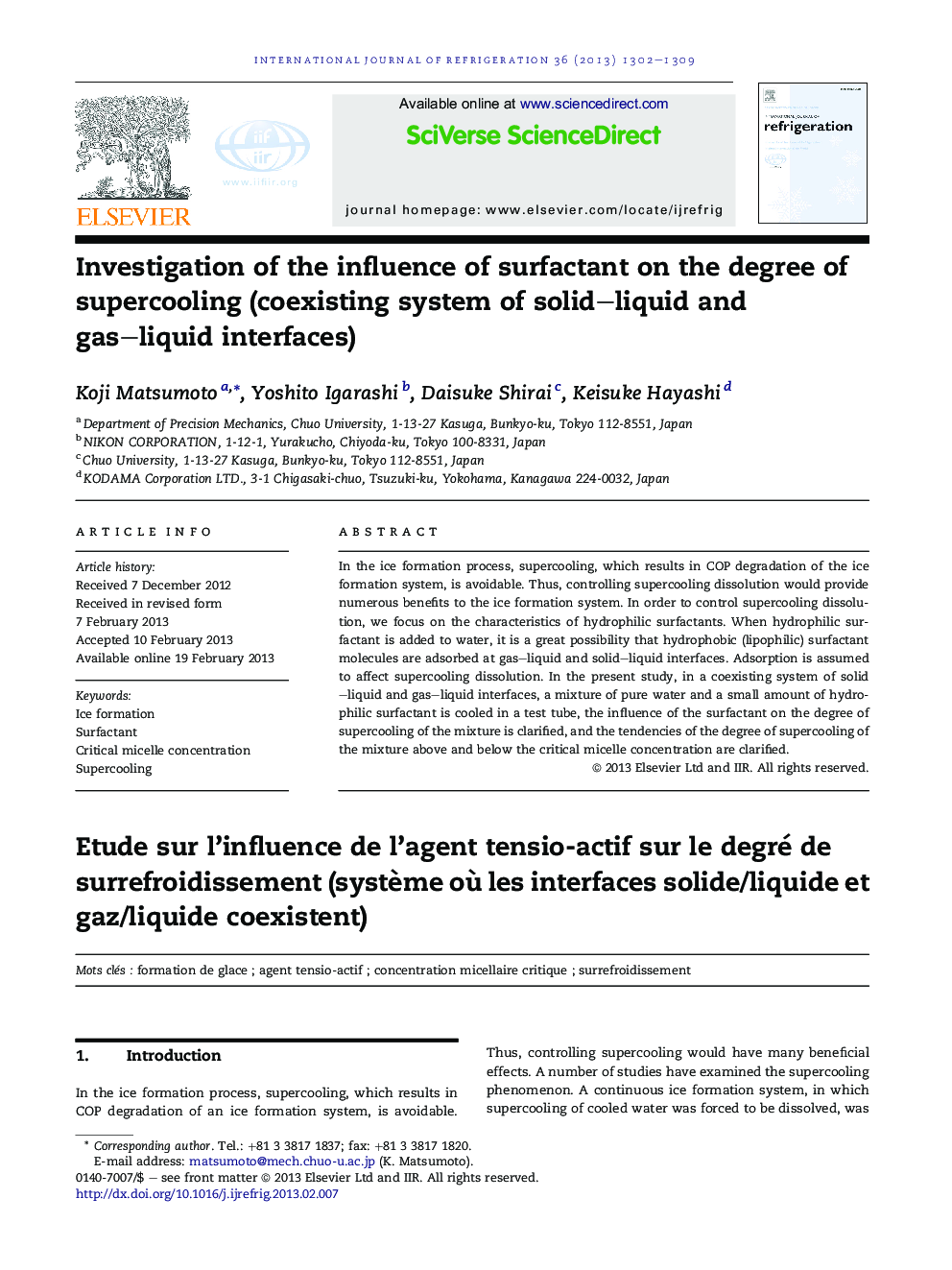| Article ID | Journal | Published Year | Pages | File Type |
|---|---|---|---|---|
| 789465 | International Journal of Refrigeration | 2013 | 8 Pages |
In the ice formation process, supercooling, which results in COP degradation of the ice formation system, is avoidable. Thus, controlling supercooling dissolution would provide numerous benefits to the ice formation system. In order to control supercooling dissolution, we focus on the characteristics of hydrophilic surfactants. When hydrophilic surfactant is added to water, it is a great possibility that hydrophobic (lipophilic) surfactant molecules are adsorbed at gas–liquid and solid–liquid interfaces. Adsorption is assumed to affect supercooling dissolution. In the present study, in a coexisting system of solid–liquid and gas–liquid interfaces, a mixture of pure water and a small amount of hydrophilic surfactant is cooled in a test tube, the influence of the surfactant on the degree of supercooling of the mixture is clarified, and the tendencies of the degree of supercooling of the mixture above and below the critical micelle concentration are clarified.
► Controlling supercooling degree by addition of hydrophilic surfactant was possible. ► Using critical micelle concentration to estimate supercooling dissolution was proper. ► The tendency of supercooling degree of the mixture with surfactant was clarified. ► Average supercooling degree was affected by adsorbed ratio of surfactant.
